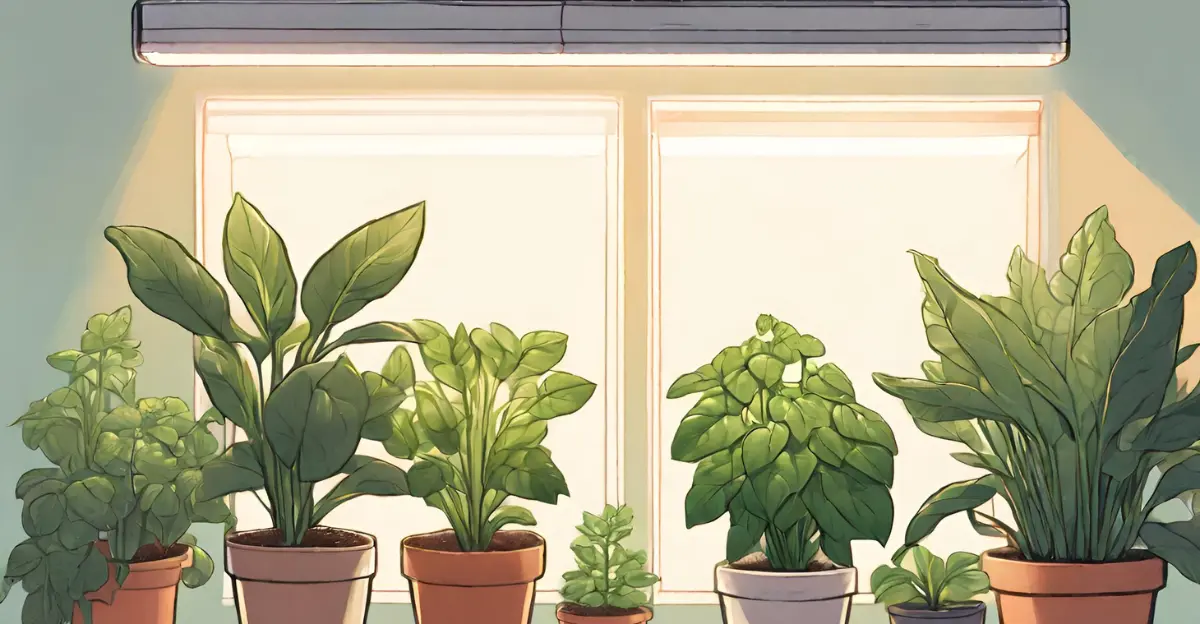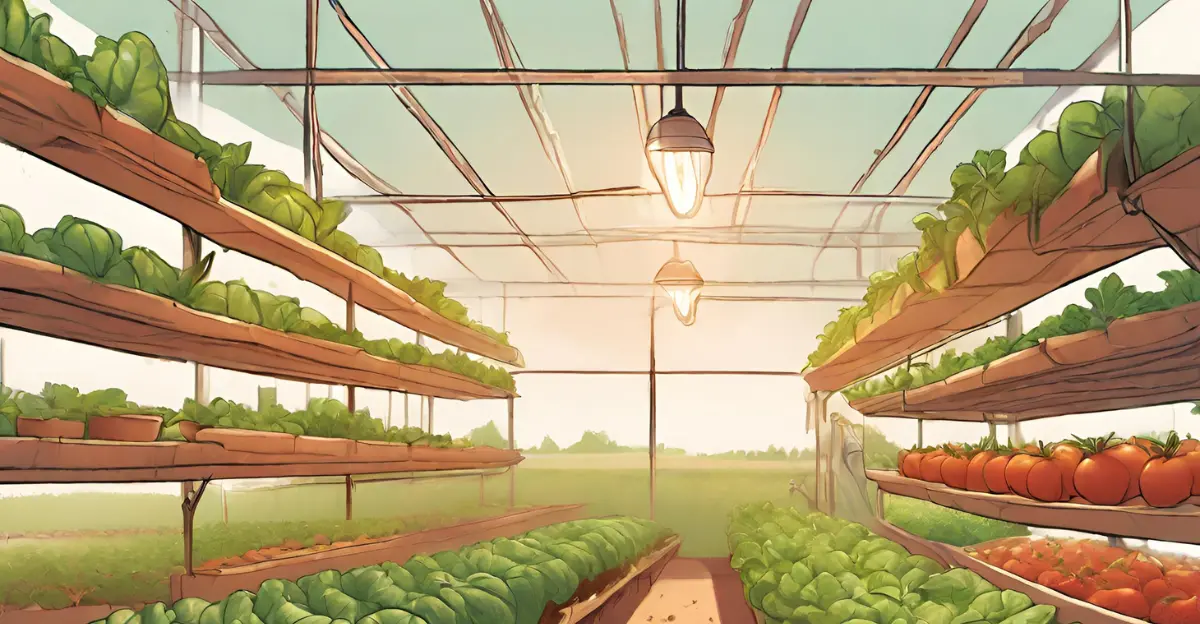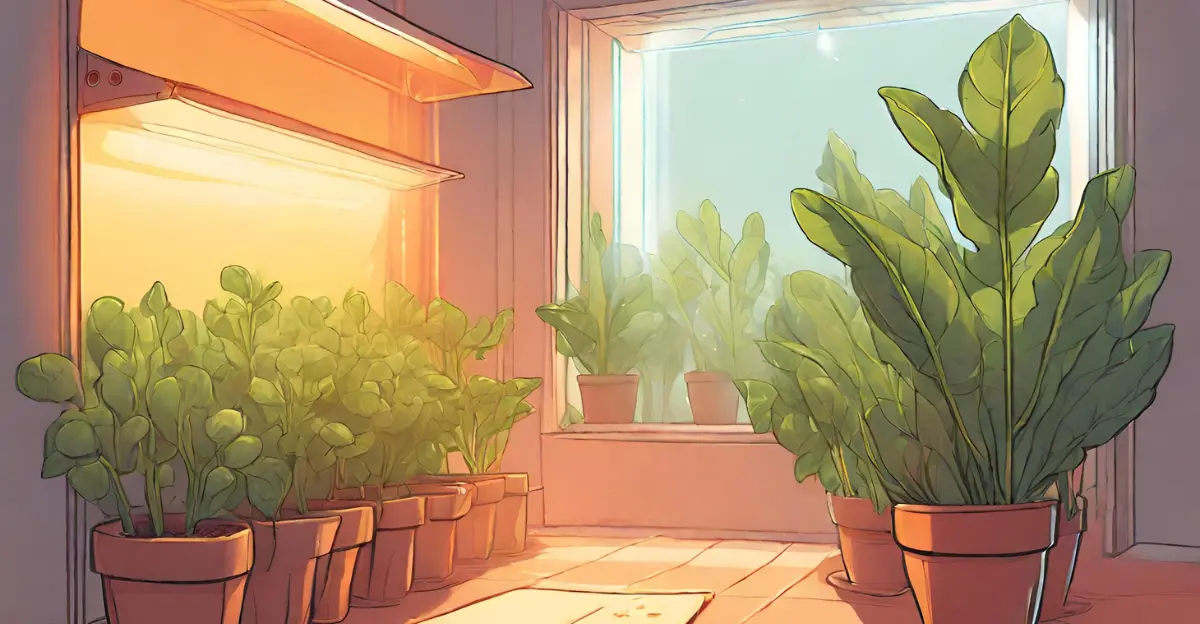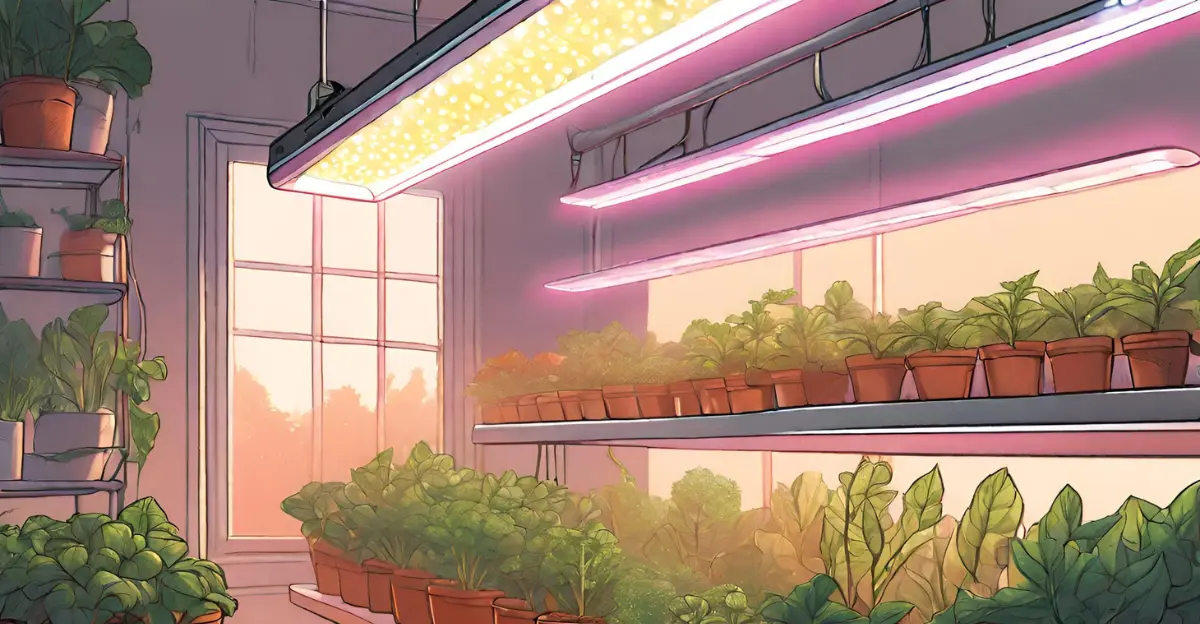Grow Light vs Sunlight: An Evidence-Based Comparison

In this guide, we’ll analyze how qualities like adjustability, intensity, and spectrum differ between sunlight and various grow light systems.
We’ll explore the impacts on yields, flavor, blooms, and more.
By the end, you’ll understand the tradeoffs to make the optimal lighting decision for your indoor garden goals and environment.
Quick Key Takeaways
How Sunlight Affects Plant Growth

Sunlight provides the light energy that enables photosynthesis, fueling plant growth and development.
But its impact depends on key qualities like spectrum, intensity, consistency, and direction.
In essence, sunlight enables photosynthesis and fuels growth. However, factors like intensity, spectrum consistency, and direction impact the results.
Key Features and Capabilities of Grow Lights

Grow lights have revolutionized indoor gardening, offering a range of features that make them an excellent alternative or supplement to natural sunlight.
Here are some key features and capabilities of grow lights:
Grow lights offer a range of features and capabilities that make them a valuable tool for indoor gardening.
Whether used as a supplement to natural sunlight or as the primary light source, grow lights can significantly enhance plant growth and productivity.
With that said, let’s compare sunlight vs. growing light based on various important factors.
A. Location Limitations

Sunlight Variability by Geography and Climate
Sunlight availability varies significantly by geography, climate, and seasons. At higher latitudes, there are shorter winter day lengths and fewer total daylight hours annually (source).
For example, in Portland, Maine (43°N latitude), daylight is under 10 hours from November to early February each year. This limits winter plant growth. Many plants require over 10 hours of daylight for buds and flowers to develop properly.
Even in equatorial regions with abundant sunlight, the duration is still limited to ~10-12 hours per day.
The intensity also varies throughout the day based on the sun’s position. UV radiation intensity is highest at midday between 10 am and 4 pm when the sun is most direct.
It also varies by latitude and altitude—there is more intense UV closer to the equator and at higher elevations.
Sunlight can be reduced on cloudy days.
Thick clouds block more UV radiation, but thin clouds provide little protection. Reflective surfaces like snow, water, and sand also intensify UV exposure (source).
Consistent and Controllable Grow Lights
Grow lights allow full control over light duration, intensity, height/direction, and spectrum to suit each plant’s needs. They enable optimized ~12-16 hour photoperiods for maximum growth vs. sunlight’s 10–12 hours.
Indoor facilities with grow lights solve issues around inadequate outdoor sunlight. They offer year-round consistency, not limited by seasons, weather, or geography.
For example, vertical farming with grow lights is gaining popularity in dense urban areas where outdoor space is limited. It enables local fresh produce without rural land or long transport.
However, the intensity of current grow lights is lower than direct equatorial midday sunlight. High-powered LED and HID grow lights can match or exceed lower-intensity sunlight in some cases.
KEY TAKE HOME: Sunlight provides the most powerful and natural light for plant growth, but varies by climate and season. Grow lights enable precise control over light quality, consistency, and daily duration to optimize plant development in any location.
B. Spectrums and Intensity

When it comes to providing light for plant growth, major differences arise between sunlight and artificial grow lights regarding the spectrum properties and intensity levels.
Sunlight delivers the entire spectrum of light, from ultraviolet (UV) to visible and infrared, that plants have evolved under.
In contrast, most grow lights emit only certain portions of this spectrum.
However, full-spectrum LED grow lights attempt to mimic the natural balance of sunlight quite closely.
Spectrum Differences
Sunlight provides a continuous distribution of wavelengths ranging from 300 nm in the UV to over 1000 nm in infrared (source).
Importantly, it contains a balanced mixture of blue, green, and red light within the visible range from 400-700 nm, all of which drive photosynthesis.
Grow lights like LEDs emit light concentrated into narrower wavelength peaks rather than a continuous spectrum.
Full spectrum LED models aim for a blue, green, and red balance similar to sunlight, while other grow light types emphasize certain colors over others.
For example, high-pressure sodium (HPS) lights are dominated by yellows and reds.
IMPORTANT: Most grow lights lack UV light, which aids in plant health and pest resistance.
Intensity Differences
When it comes to intensity, direct overhead tropical sunlight can reach up to 100,000 lux, with 10,000 lux on average days even in cloudier regions (source).
This far exceeds any artificial grow lights, which typically provide between 5,000-50,000 lux depending on the lighting technology used (source).
SIDENOTE: Some high-power LED lights can approach 100,000 lux.
However, since grow lights hang much closer to the canopy than the sun, they can match or sometimes exceed the intensity of weaker indirect sunlight.
New high-power LED fixtures can also approach the intensity of direct sunlight.
But in general, sunlight has a much higher maximum intensity, while grow lights offer a more controlled range appropriate for healthy plant growth.
C. Consistency and adjustability
Consistency and adjustability are two areas where grow lights really shine over natural sunlight.
They enable finer calibration and control over key factors that determine successful plant growth and development.
Grow Lights Provide Consistent, Optimized Lighting
As the research data shows, grow lights offer exceptional consistency in duration, intensity, height from plants, and other variables:
So in essence, grow lights enable superior consistency and control over lighting. This allows “dialing in” the ideal light recipe to facilitate healthy growth.
Natural Sunlight Fluctuations Are More Difficult to Manage
In contrast to such stability with grow lights, sunlight naturally varies in both duration and intensity:
So these sunlight variations make it more challenging to provide stable conditions optimized for plant development. Supplemental lighting helps overcome this issue.
Adjustability Is A Major Advantage of Grow Lights
Beyond just consistency, grow lights offer exceptional adjustability:
Such precise adjustability allows for optimizing the light as plants grow. This degree of control is impossible to achieve with outdoor sunlight (source).
D. Impacts on yield, flavor, and nutrition

When analyzing important factors like yield, flavor profiles, and nutritional content, some key differences arise between sunlight and various grow light systems.
Yield Differences Are Highly Variable
Regarding yields, research shows sunlight typically enables higher production thanks to its sheer intensity.
However, grow lights allow extending photoperiods to 24 hours, enabling faster grow cycles and potentially more harvests per year.
For example, with tomatoes grown indoors under LED inter-lighting, the light recipe and plant spacing optimization increased the yield by 17-50%, compared to controls without supplemental lighting.
Flavor and Aroma Production
Flavors and aromas depend on the complex biosynthesis of plant secondary metabolites like terpenes.
Sunlight provides the full spectrum that plants have evolved under, yielding balanced flavor profiles.
Though evidence is limited, some studies show that grow lights can skew flavor balances in some species.
For example, combinations of red and blue LED lighting decreased aroma production in cucumbers by about 50% compared to white fluorescent lighting.
Another study found that narrowband red LED lighting altered aroma volatile concentrations in tomatoes compared to white LEDs, indicating light spectrum can impact aromas.
Still, effects likely depend on the specific wavelengths blended in grow light recipes.
Nutrient Levels and Antioxidants
Regarding nutrition, sunlight leads to higher levels of some compounds like vitamin D precursors. However, vitamin D requires UVB wavelengths that most grow lights lack (source).
However, research consistently shows that properly designed grow light blends increase antioxidants, vitamins, minerals, and other beneficial nutrients.
In essence, both natural and artificial light sources have tradeoffs for yield, flavor, and nutrition. Sunlight produces the most natural results — grow lights enable optimization.
E. UV exposure

UV light, specifically UV-B and UV-C wavelengths in small doses, can benefit plants by increasing the production of protective secondary metabolites like flavonoids and enhancing disease resistance pathways (source).
However, excessive UV causes damage, so supplemental UV must be applied judiciously.
Comparison of sunlight vs grow lights UV levels
Outdoor sunlight contains much higher levels of UV radiation than any indoor grow light.
For example, summer sunlight may provide 10-30 watts per meter squared of total UV radiation at midday, including 5-15 W/m^2 of UV-B (source).
High-quality LED grow lights emit less than 1 watt per meter squared of UVB radiation, with levels around 0.2 W/m^2. They predominantly produce UVA wavelengths, with very little UVB emission.
HID lights like high-pressure sodium lamps emit some UV radiation, but it is mostly filtered out by the protective glass casing around the bulb (source).
T5 fluorescent tubes and ceramic metal halide (CMH) lights also naturally emit some UV light including UVB wavelengths, in varying amounts.
To sum it all off: at its peak, direct summer sunlight can have over 10 times the total UV intensity of typical indoor grow lighting, but winter sunlight can be less intense (source).
FURTHER READING: T5 vs T8 Grow Lights: Which Is Better for Your Indoor Farm
Research on supplemental UV effects
Here are a few research examples of using supplemental UV for growing plants:
These studies show the practical benefits of UV in enhancing the quality and growth of indoor edible crops.
Recommendations for using UV light
Based on research, here are some tips for safely using supplemental UV light:
When used properly, UV light can significantly improve plant growth, yield, and quality.
F. Operating Costs
When weighing sunlight against grow lights, operating costs become a major consideration
Electricity is the predominant ongoing expense for most grow lighting setups. Meanwhile, sunlight itself comes free of charge besides infrastructure like greenhouses.
In total, while LED fixtures have higher upfront expenses, their energy efficiency and longevity lead to much lower lifetime costs.
KEY TAKE HOME: By combining sunlight with strategic LED supplemental lighting, overall costs can be optimized for sustainable results.
Optimizing a Combined Solution

Using both natural sunlight and supplemental grow lighting together can be an effective strategy for plant growth.
Sunlight provides the full spectrum of light that plants need, but supplementing with grow lights allows you to provide consistent lighting when sunlight is limited by weather, seasons, or shading.
The key is using sunlight whenever abundantly available, and filling the gaps with grow lights tailored to the needs of your plants.
With some planning around placement and adjusting variables like duration and intensity, you can support healthy plant growth year-round.
Adjusting Variables for Growth Stages and Seasons
Adequately adjusting these variables ensures plants have the optimal light recipes through each phase of development.
Use Cases and Examples
Here are some examples of effectively using sunlight and grow lights together:
KEY TAKE HOME: Leverage sunlight whenever abundantly available. Choose grow lights to fill gaps in intensity, hours of light, or spectrum. And adjust placements and variables based on plant and season.
Conclusion
After thoroughly analyzing differences in spectrum, intensity, consistency, costs, and other factors, the evidence clearly shows that a combined solution of leveraging both sunlight and supplemental grow lights is optimal for indoor plant growth.
This integrated approach takes advantage of sunlight’s natural full spectrum while using grow lights to fill gaps and inconsistencies in winter months or indoor settings.
Grow lights also enable extending photoperiods and calibrating variables to each plant’s needs.
In the end, here are the key takeaways for you:
Follow these guiding principles of using both natural and supplemental lighting to set up your plants for sustainable success.
Meet your guide
Dhruvir Zala